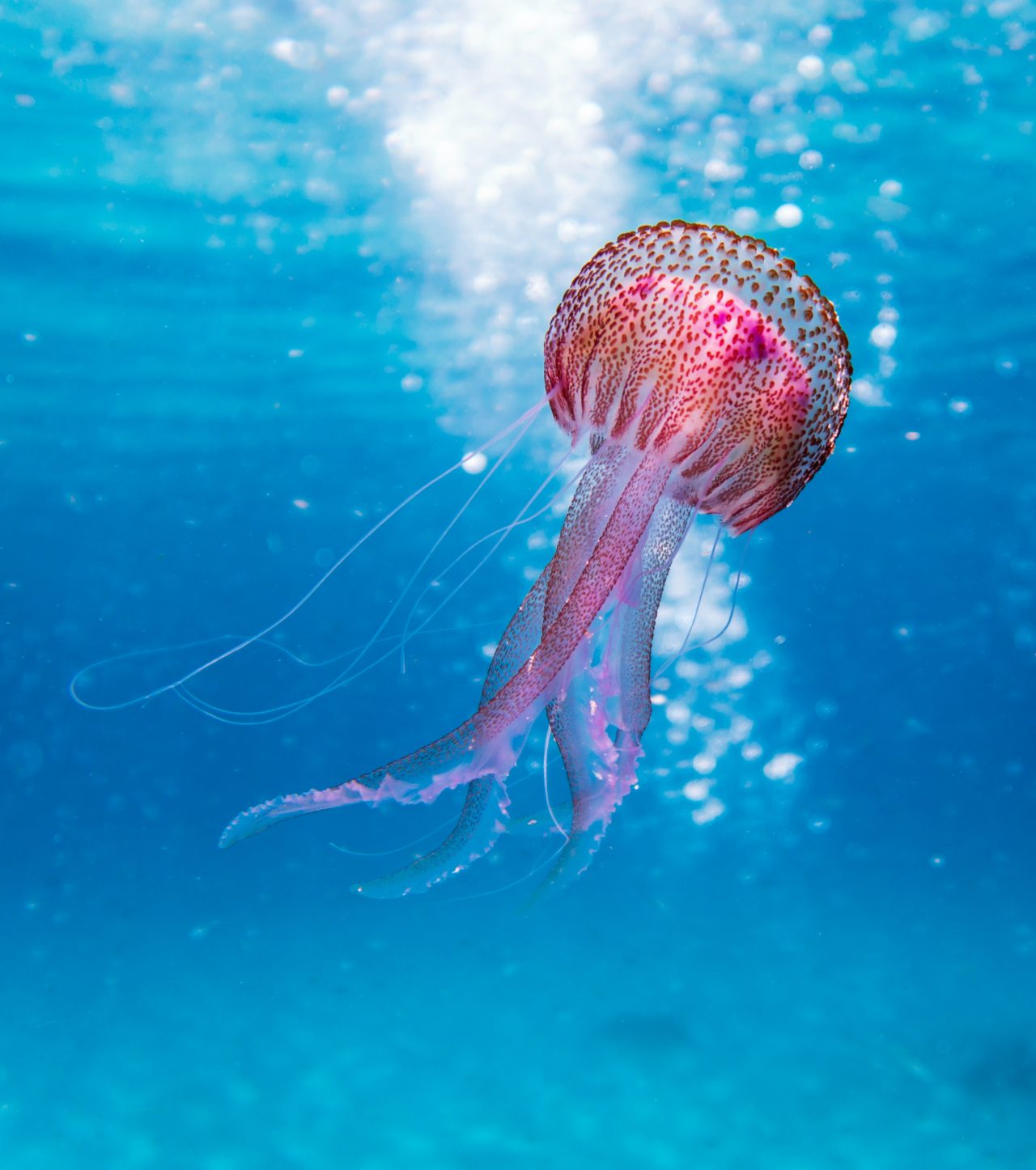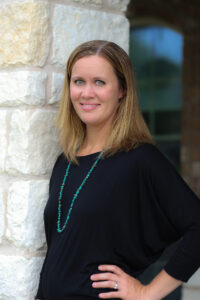 Welcome to Candy Wellins, a former teacher who has a BA in journalism and an M.Ed. in literacy education. In addition to writing picture books, she’s a full-time Texas mom to “three wonderful children who keep me up-to-date and immersed in children’s literature.”
Welcome to Candy Wellins, a former teacher who has a BA in journalism and an M.Ed. in literacy education. In addition to writing picture books, she’s a full-time Texas mom to “three wonderful children who keep me up-to-date and immersed in children’s literature.”
When she’s not reading, writing, or mothering, she loves to:
- Run
- Travel
- Run and travel together. She’s currently on a quest to run a half marathon in each state.
- And after all that, she loves to nap!
With that, let’s get right to it so we can find out more about Candy’s story and her books!
RVC: What aspect/part of yourself today gives away where you’re from and how you were raised?
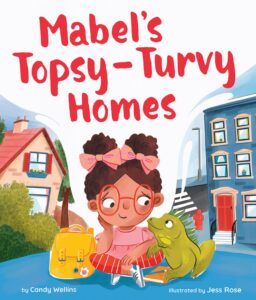 CW: Not to be too on the nose, but my books are a pretty good reflection of that. Saturdays Are For Stella reflects my close relationship with my grandparents and Mabel’s Topsy-Turvy Homes showcases the mixed feelings of growing up in a divorced home. Although it’s a biography at heart, The Stars Beckoned imparts my overall love of family. And my latest book, A Geoduck Is Not A Duck is certainly an homage to the place I grew up, Washington state.
CW: Not to be too on the nose, but my books are a pretty good reflection of that. Saturdays Are For Stella reflects my close relationship with my grandparents and Mabel’s Topsy-Turvy Homes showcases the mixed feelings of growing up in a divorced home. Although it’s a biography at heart, The Stars Beckoned imparts my overall love of family. And my latest book, A Geoduck Is Not A Duck is certainly an homage to the place I grew up, Washington state.
RVC: What influence did your parents have on you as a future writer?
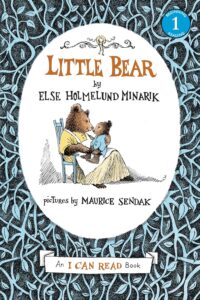 CW: They read to me and always made sure I had access to lots of books. I can’t think of anything more special or important to a child than owning books and having a library card. I still remember the excitement I had of signing up for my first library card and checking out my first book (Little Bear by Else Homelund Minarik and Maurice Sendak).
CW: They read to me and always made sure I had access to lots of books. I can’t think of anything more special or important to a child than owning books and having a library card. I still remember the excitement I had of signing up for my first library card and checking out my first book (Little Bear by Else Homelund Minarik and Maurice Sendak).
RVC: Let’s jump ahead a bit and talk about college. What was the plan for that journalism degree?
CW: I loved writing and telling stories from a young age—and I was good at it. A journalism degree felt like a way to do that and make money, but ultimately a journalist’s life was not for me. I’m not that extroverted!
RVC: What’s the #1 thing from your journalism days that serves you best as a picture book writer?
CW: Not to overwrite. Keep it clear and concise and get to the point!
RVC: Please explain the shift to the master’s degree in education.
CW: I always loved working with children. I babysat all through high school and was a substitute teacher as I worked my way through college. Eventually I decided my heart was more in education than journalism so I went that route instead.
RVC: What was the turning point for you as a writer? When did you fully commit?
CW: Being a picture book writer was always a pipe dream. It felt so fantastical—like being a Olympic gold medalist or Oscar-winning actress. It sounds fun, but it will never happen.
Then in early 2016, I met a new neighbor who happened to be a children’s author. My mind was blown. She was so normal and her path toward publishing felt so doable. That night, I sat down at my computer, found a class for picture book writing and enrolled. It started less than a week later and I’ve been in, fully committed since then.
RVC: Describe what it took from that turning point to your first sale.
CW: It took writing (in some form or another) practically every day. Now, mind you, writing is not always pencil to paper (or finger to keyboard). Sometimes it’s analyzing the latest picture books, attending a class or workshop, networking in the industry or participating in a critique. Even letting ideas percolate as I run or shower or cook dinner counts as writing. But ultimately, it’s about doing some form of work daily. It has to become routine and you have to love doing it.
RVC: What’s the story behind your first picture book?
CW: I really wanted to write a grandparent story so I started brainstorming every idea I could associate with grandparents and grandchildren. One thing I wrote down was “Pictures all over the fridge” because one of my grandmothers had her entire refrigerator covered with photos of the grandkids. It reminded me a bit of teenage girls who cover their bedroom walls floor to ceiling with posters of the boys they like. I started imagining a love story that centered around a grandparent/grandchild but also showcased the same emotions as first crush.
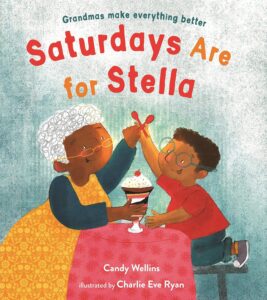 My critique group thought it was cute, but had trouble figuring out the characters and distinguishing them as grandparents and grandchildren. In revisions I focused on making clear it was a grandparent story and even included the grandma’s death. Another critique showed me I was on the right track, but still needed something to make the story meaningful. I kept thinking about how no matter how much we love our grandparents, it’s inevitable that our time together is brief. How do we make the moments last? That pushed me toward thinking about how a grandparent’s impact lasts long after they’re gone. Adding a new sibling to the story was the perfect touch to Saturdays Are For Stella.
My critique group thought it was cute, but had trouble figuring out the characters and distinguishing them as grandparents and grandchildren. In revisions I focused on making clear it was a grandparent story and even included the grandma’s death. Another critique showed me I was on the right track, but still needed something to make the story meaningful. I kept thinking about how no matter how much we love our grandparents, it’s inevitable that our time together is brief. How do we make the moments last? That pushed me toward thinking about how a grandparent’s impact lasts long after they’re gone. Adding a new sibling to the story was the perfect touch to Saturdays Are For Stella.
RVC: What’s the most useful lesson that book taught you?
CW: Get a good critique group and listen to them. We are often so invested in our work it’s hard to hear an outside perspective. But when we listen to constructive feedback, it really can make all the difference in our work.
RVC: What do you like most about Charlie Eve Ryan’s art?
CW: I especially love her soft color palette and her ability to showcase emotions.
RVC: You had a stretch where you were publishing a book a year there. How did that happen?
CW: Luck? Timing? Persistence? I’m constantly creating, revising, and submitting. When I go on a hot streak, I soak it up because there are long dry spells in publishing too.
RVC: I hear you there! Now, I’m a sucker for nonfiction picture book biographies, and when they’re lyrical, too? Yes, please. Tell me about The Stars Beckoned.
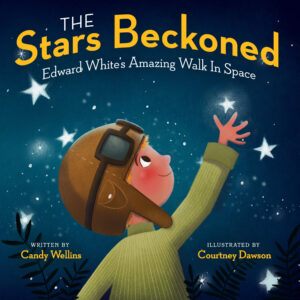 CW: First of all, I’m not a space person at all. I have no interest in exploring anything that isn’t firmly rooted to planet Earth. But I love interesting people. In 2018, I was teaching a group of middle schoolers and we were talking about the US/Soviet Space Race. They were mostly interested in America’s firsts—the first to go to space, the first woman in space, the first to walk on the moon. I knew the answers to all those, but I didn’t know who the first to walk in space was. When I looked up the answer, I discovered Ed White’s name along with an interesting quotation. Upon finishing his spacewalk, he said, “This is the saddest moment of my life.”
CW: First of all, I’m not a space person at all. I have no interest in exploring anything that isn’t firmly rooted to planet Earth. But I love interesting people. In 2018, I was teaching a group of middle schoolers and we were talking about the US/Soviet Space Race. They were mostly interested in America’s firsts—the first to go to space, the first woman in space, the first to walk on the moon. I knew the answers to all those, but I didn’t know who the first to walk in space was. When I looked up the answer, I discovered Ed White’s name along with an interesting quotation. Upon finishing his spacewalk, he said, “This is the saddest moment of my life.”
I got goosebumps. Here was a picture book waiting to be told. After all, what kid can’t relate to such big emotions as the saddest moment ever? But was I the person to do it? I quietly did the research and decided that I didn’t need to be a space enthusiast to tell his story. Space exploration was just one aspect of Edward White. More importantly he was a passionate person who followed his dreams relentlessly and that was something I could really connect with.
RVC: Something most people don’t realize is how much over-researching and overwriting we nonfiction picture book writers tend to do. What’s the coolest thing that didn’t quite make it into the book?
CW: Just one? Ok, here’s a fun one. NASA used to let each crew name their own missions. For White’s Gemini IV flight, he and pilot James McDivitt wanted to call the mission Eagle. They had even planned an Eagle emblem they would wear as a patch on their spacesuits. NASA ultimately decided against letting them call their flight Eagle as they wanted to save it for a more monumental mission (You may recall hearing the words “The Eagle has landed” on such a mission a few years later).
Left without a plan B, White and McDivitt went without a name and just had drugstore American flag emblems sewn on their suits instead. Wearing the American flag has since become a tradition and every American astronaut since them has worn one.
RVC: Since that book uses rhyme, I’ll ask the question most writers want me to ask. What’s the most common misconception about rhyming picture books?
CW: The mistake I see most often is focusing only on rhyme and forgetting all about meter. If the story doesn’t have rhythm, even a good rhyme can sound bad.
RVC: What’s your best tip for getting rhymes right?
CW: Read lots of good rhyming books. Hearing it done right is the best teacher.
RVC: Tell me about a time in your writing career where things didn’t go the way you wanted.
CW: I’ve been working on a picture book biography since 2016. I’ve tried telling it as a picture book, a novel-in-verse, a graphic novel. So far, nothing is working, but I love this person’s story and I’m not giving up on it yet.
RVC: Good for you–I’m sure you’ll nail it eventually. Now, who are your literary heroes? What have they meant to you?
CW: I think the great thing about books is there are so many people doing it well in so many different ways. I’m constantly finding inspiration—from authors who wrote decades ago to debut writers. Everyone who’s persevering and sharing stories is a hero of mine.
RVC: In all your experience with the picture book industry, what has most surprised you?
CW: I’m still surprised by the reaction some of my books get. Of course, I have very visceral reactions to a lot of things I read, but it still blows me away when someone has that response to something I wrote. A young reader told me after reading Mabel’s Topsy-Turvy Homes that it was the first time she felt seen by a picture book. That one got me!
RVC: If you had to summarize the most important thing you’ve learned about writing picture books, what would it be?
CW: To slightly misquote the great Winston Churchill: never, never, never give up. Writing picture books is all about the long game.
RVC: Great point! After COVID, I try to ask a health and wellness question each time, so here’s yours. What do you do to de-stress or for downtime?
CW: I prioritize exercise every day. And I love doing puzzles—jigsaws, Wordle, crosswords. I think I’m up to about six different ones I do every morning before any real work begins.
RVC: One final question for this part of the interview. What is something upcoming that you are excited about, or really want to promote?
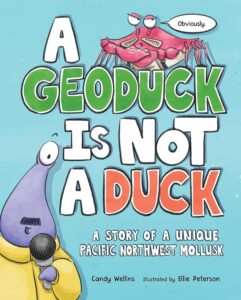 CW: My latest picture book, A Geoduck Is Not A Duck, comes out on March 5. I’m super excited because this is my first funny picture book and I really hope it gives readers a good chuckle. It’s the story of a misguided news crew on the hunt for a gooey duck spotted on a Pacific Northwest beach. What the hapless crew doesn’t realize is that a geoduck (pronounced “gooey duck”) is nothing like the slime-covered aquatic bird they are looking for. It’s a comedy of errors mixed with lazy journalism all done in comic format.
CW: My latest picture book, A Geoduck Is Not A Duck, comes out on March 5. I’m super excited because this is my first funny picture book and I really hope it gives readers a good chuckle. It’s the story of a misguided news crew on the hunt for a gooey duck spotted on a Pacific Northwest beach. What the hapless crew doesn’t realize is that a geoduck (pronounced “gooey duck”) is nothing like the slime-covered aquatic bird they are looking for. It’s a comedy of errors mixed with lazy journalism all done in comic format.
RVC: Okay, Candy. It’s time for the much ballyhooed SPEED ROUND. Zippy fast questions followed by zoomy quick answers. Are you ready?
CW: I was born ready.
RVC: What’s the most interesting or unusual talent you have?
CW: I can name every British monarch in order from 1066 to today.
RVC: If you could instantly become an expert in any field, what would you choose?
CW: Genetics. I’m so fascinated by the subject.
RVC: If you could spend a day inside the world of one picture book, what would you pick?
CW: Anything by Richard Scarry. I’d set myself up nicely in one those little Swiss chalets and be very comfortable. Skiing by day, books by the fire at night, and a hundred labeled foods to choose from whenever I get hungry.
RVC: What’s the last picture book you read that actually made you LOL?
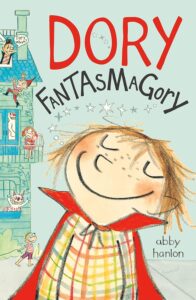 CW: It’s not a picture book, but the entire Dory Fantasmagory series by Abby Hanlon is absolutely hilarious. My kids can’t get enough of them. I will randomly say a line from one of the books every now and then just to get my kids to laugh. It works every time.
CW: It’s not a picture book, but the entire Dory Fantasmagory series by Abby Hanlon is absolutely hilarious. My kids can’t get enough of them. I will randomly say a line from one of the books every now and then just to get my kids to laugh. It works every time.
RVC: Finish the sentence. I’m not ready for a writing session without…
CW: A little peace and quiet.
RVC: What’s your picture book philosophy in five words or fewer?
CW: The world needs your stories.
RVC: Thanks so much, Candy!

